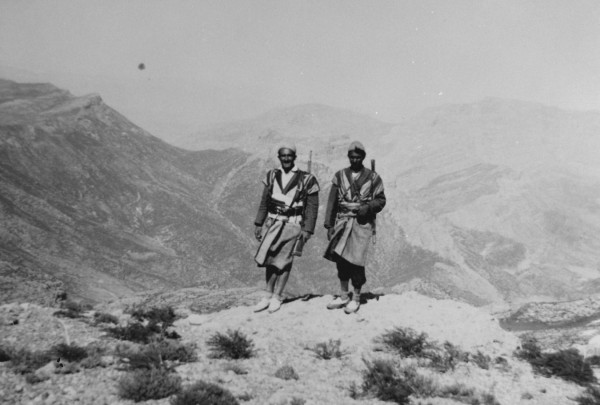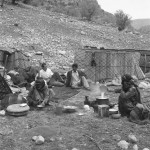Location: Koerner Center, Yale University 
Dates: September-October 2010
* This is an online version of an exhibit displayed at Yale University in the fall of 2010.
In the spring of 1973 I traveled with a camp of the Baharvand Lurs in the mountains of southwestern Iran. The Lurs are one of the major tribal groups that migrate seasonally with herds of sheep and goats between the lowlands and mountain pastures. This seasonal migration, known as transhumance, is timed to the seasonal changes in weather and pastures. The lowlands, where they pass the winter in sheltered tents are warmer, whereas the highlands are covered in snow. As the pastures in the lowlands begin to wither with the heat of summer, those in the highlands respond to the warming temperatures with vigorous growth of grass. In the fall, with the onset of snow, the trek is reversed.
The terrain in Luristan is rugged, consisting of a series of mountain ridges and valleys between. The land rises from the lowlands in the west to the high mountains in the east, through a succession of ever-higher ridges and valleys. Depending on the weather and condition of pastures, the camp moved every day or so, crossing one ridge after another until they reached their summer pastures, a trip that took about two weeks.
I took the trip shortly before the Iranian Revolution, during the final years of the Shah’s reign. Although little technology had penetrated Luristan, the Shah’s White Revolution had placed tent schools among the camps and young men were conscripted into the military. Few roads existed and there were no telephone lines or electricity. Tribal customs still prevailed, but were weak and gave way in a few years to State control. Through the good fortune of timing and the help of a former student of mine at Rice University, Sekandar Amanolahi, who was a member of the tribe, I witnessed the final stages of a dying way of life.
During the trip I took hundreds of photos in color and black and white, as well as some movies. Nothing in the photos was posed. I was able only to react to situations and take pictures when I saw an opportunity. The twenty photos in the exhibit focus on the landscape, the people, and the daily routine of living and migrating.
Please click on each thumbnail below to see the photos and descriptions. Please press ESC to exit the photos.
Epilogue
None of the tribal people depicted is either alive or still migrating. With the building of roads, schools, Army service and the penetration of modern technology, tribal pastoralism in Luristan is a thing of the past.


The Lurs were conquered in the late 1920s by the Reza Shah’s military, stripped of their weapons, had their tents burned, and were forcibly settled. The images above are from the 1920s.






















